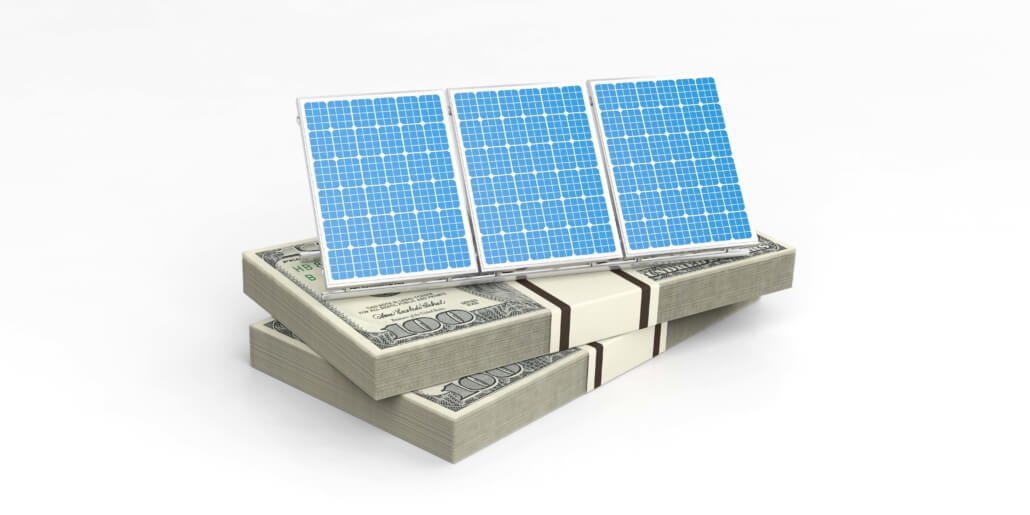Farm Credit Canada Supports Renewable Energy
Are you a farmer or do you work in agriculture? Do you own your land and buildings? Are you looking to generate additional income?
How is Accelerated Depreciation Lowering the Cost of Solar Net Metering?
This is part of a series of blogs looking at the economics of solar power in Canada today. You can read our blog “What Caused Solar Costs to Fall 99%?” to learn more.
Today we will focus on the impact of accelerated depreciation and how it affects the paybacks and economics for solar generation. While capital costs play an important role in the economics of investing in solar power, the cost of electricity, as well as how much sun your system receives, are also both important factors in calculating the payback and return on investment for your solar generator.
However, one facet of solar’s increasingly improved economics that is often overlooked is the tax treatment of investments in solar. In particular, Accelerated Depreciation can greatly improve your case for solar, especially in the first year.
An Energy Revolution: What Caused Solar Costs to Fall 99%?
This definitive guide tries to accurately explore what factors have been most important in contributing to the amazing decline in solar panel prices over the past 4 decades. If you’d like a quick look at the Top 5 Reasons for Falling Solar Costs, you can check out our Infographic here.
Table of Contents
- The Falling Cost of Solar
- What Factors Contributed to the Fall in Cost for Solar?
- MIT’s Model: Evaluating the Causes of Photovoltaics Cost Reduction
- Low-Level Factors of Falling Solar Cost
- High-Level Factors of Falling Solar Cost
- “Market-Stimulating Policies” Played a Large Role in the Falling Cost of Solar
- Where are Solar Costs Sitting Today?
- What does the future hold for Solar costs?
- Is now the time to invest in a solar generator?
- Get Started Today!
The Falling Cost of Solar
The drastic fall in the cost of solar technologies can be considered one of renewable energy’s greatest success stories. We’ve seen time and time again that from a cost perspective the carbon-intensive way of doing things is the cheapest way to get something done. And while this was the case in the world of energy production for a long time, the tables have turned significantly when it comes to solar energy.
The Top 5 Reasons For Falling Solar Costs
View “TOP 5 REASONS FOR FALLING SOLAR COSTS” Infographic
Solar costs have dropped an unprecedented 99% in the last four decades. Here’s a quick infographic exploring what the top 5 reasons that lead to this fall in cost. If you’d like to learn more, please check out our definitive article: “An Energy Revolution: What Caused Solar Costs to Fall 99%?“
DEADLINE APPROACHING! Prequalify for New York’s Energy Storage RFPs
Are you an energy developer who conducts business in New York? Then time is running out for you to submit your pre-qualification documents for the upcoming New York Battery Storage RFPs! Released by the independently operated utilities of New York State, projects range from 10 MW to 300 MW and are available to companies who have prior Energy Storage experience.
Top 5 Energy RFP Pitfalls
Whether it’s a public or private sector energy organization, many companies rely on Requests for Proposals (RFPs) to collect, evaluate, and determine the most competitive solution to ensure the success of their business and operations. A responding bidder is required to invest a large amount of time, effort and money into developing a submission to an RFP. In most cases, bidders must display some level of site control, at least have submitted an application for interconnection, and have completed at a minimum a desktop assessment of the natural and cultural heritage features on the project site and surrounding areas. By the time a bidder is prepared to respond to an RFP, they likely have already invested thousands of dollars into the initial development of the project, if not more. Increasingly, requirements for community outreach and engagement are being added to the RFP process, which adds additional effort for the bidder for community meetings, outreach, and to facilitate building the on-going relationship. There are any number of pitfalls that could cause your submission to be scored poorly or worse, terminated. Below are the top 5 RFP pitfalls that we’ve either helped our clients avoid or heard horror stories from clients’ previous experiences.
CAIF is sweet but don’t bet the solar farm on it!
Background on CAIF and Solar
A few weeks ago, the Federal Government’s Environment and Climate Change Canada (ECCC) released the Applicant Guide for the Climate Action Incentive Fund (CAIF) and opened the application window via their Single Window Information Manager (SWIM). The CAIF represents an exciting opportunity for Canadian businesses who are or will be investing in solar net-metering.









